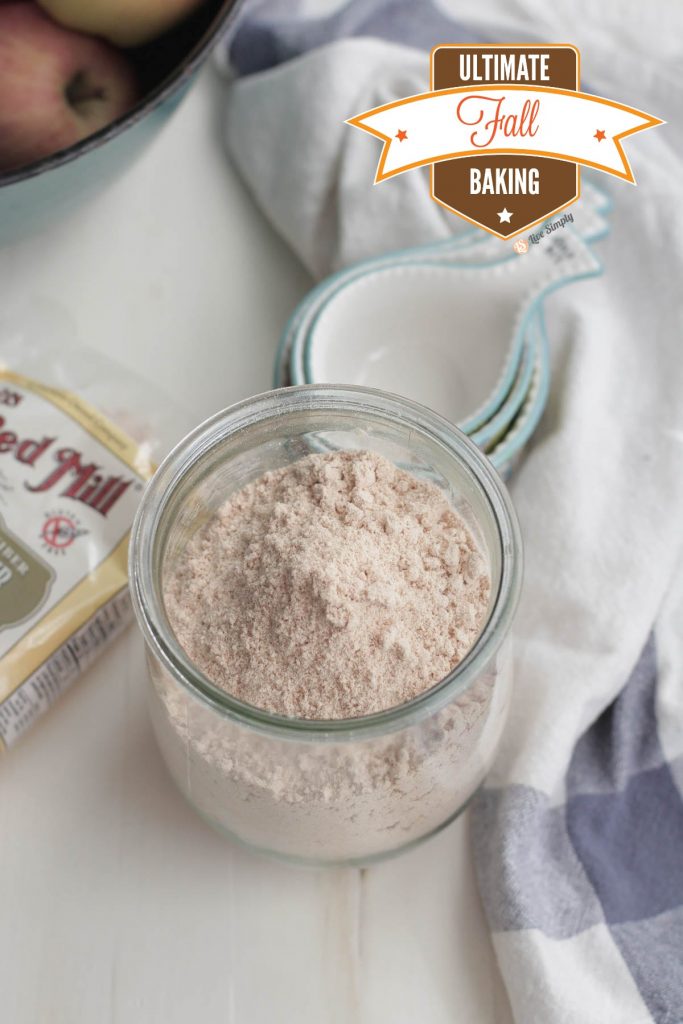
Want to Save This Recipe?
Enter your email & I’ll send it straight to your inbox. And you’ll get new recipes & tips each week.
Over the last six weeks we’ve covered every main flour used in real food baking, from whole wheat to einkorn to grain-free flours. The world of real food baking is far from boring or bland and each flour is used to create unique baked goods with a variety of tastes and textures depending on a baker’s needs and preferences.
Today is the very last day in the Ultimate Fall Baking series flour posts (wait until you see the huge surprise I have for you tomorrow!), a series that started with a decadent cake and ends with healthy muffins. I hope your tummies are full and you walk away with the knowledge of how to use various “real” flours to successfully create delicious homemade goodies in your kitchen.
What is Coconut Flour?
Coconut flour is a grain-free flour that’s made from the coconut solids leftover after the meat of the coconut has been used to make coconut milk. The leftover solids are then dried and used to make a flour known as “coconut flour.” Coconut flour is nut-free (as it’s made from coconuts versus nuts) which makes it perfect for those going grain-free with nut allergies.
Why Should I Use Coconut Flour?
Coconut flour is grain-free, high in fiber, and low in carbohydrates.
I’ll admit that coconut flour is not my favorite flour to use exclusively in recipes as it can be tricky to use due to the liquid versus flour ratio, but I love keeping a bag of coconut flour on hand for use in almond flour recipes. Coconut flour absorbs liquids very effectively making it the perfect addition to almond flour recipes that need a bit of absorption help, such as muffins and quick breads.
How Can I Use Coconut Flour?
Coconut flour can not be substituted one for one in wheat or other grain-free recipes. Coconut flour absorbs liquids very effectively which leaves baked goods, without an adequate amount of liquid, overly dry. Coconut flour recipes typically call for an equal amount of wet ingredients to dry ingredients to make up for the excessive liquid absorbed by the flour, so don’t be alarmed when you find recipes calling for 1/2 cup of coconut flour and just as much or slightly more liquid. Some bakers advise using 1/4 cup coconut flour per 1 cup whole wheat flour (non-yeast recipes), however, an equal amount of liquid is also needed. I personally haven’t tried this recommendation.
Coconut flour recipes also typically call for a lot of eggs, sometimes as many as half a dozen eggs (or more) in one recipe. Remember gluten is a binder in gluten-based recipes, and coconut flour lacks gluten which means eggs are needed to bind the recipe together. Recipes for muffins, cakes, and breads generally need more binding than cookies which means more eggs are needed. Other binders may be used (flax seeds, psyllium husk, dates), but eggs are most commonly used. Just like with almond flour, I recommend using recipes that specifically call for coconut flour when first getting started.
Coconut flour can also be used with almond flour to help absorb liquid in quick bread and muffin recipes.
Coconut flour will yield a mild coconut taste in baked goods, but this flavor can easily be disguised by spices like cinnamon.
Coconut flour should sit for a couple of minutes before baking for the liquid to be absorbed.
Coconut flour is also great to use in place of corn meal for coating fish and chicken.
How Do I Store Coconut Flour?
Coconut flour is best stored in an air-tight container in the fridge or freezer.
Purchasing Tips
Coconut flour can be made at home (here’s a tutorial), but I find the process can be a bit tedious. There are several companies that produce and sell coconut flour. I personally purchase Bob’s Red Mill’s Coconut Flour from Bob’s Red Mill, the natural health food store, or Amazon. Remember, coconut flour is “concentrated” so a little bit goes a long way.
Coconut Flour Recipes to Get You Started
To get you started with coconut flour, I’ve compiled a list of my favorite coconut flour recipes. Some recipes exclusively call for coconut flour, while others use coconut flour to accompany almond flour and help with absorption.
Grain-Free Chocolate Cake with Icing from Live Simply
Pumpkin Bread from Live Simply
Grain-Free Pumpkin Spice Biscotti from Oh, The Things We’ll Make
Raw Cookie Dough Bites from The Nourishing Home
Lemon Drop Cupcakes with Creamy Lemon Frosting from The Nourishing Home
Apple Harvest Breakfast Bars from Raising Generation Nourished
Simple Soaked Granola Bars from Raising Generation Nourished
Energy Bars from Raising Generation Nourished
Cheddar and Jalapeno Biscuits from The Rising Spoon
Fudgy Pumpkin Mini Muffins from Real Food Simple
Coconut Chai Muffins from Nourishing Simplicity
Grain-Free Cinnamon Bread from Real Food Outlaws
Chocolate Coconut Chunk Cookies from Homegrown and Healthy
Apple Cranberry Crumble from Wellness and Workouts
Finally, before we put away the aprons and close the bags of flour, let’s enjoy one last treat together. These coconut flour apple carrot muffins are easy to make and super moist (thanks to the coconut flour), the perfect introduction to baking with coconut flour.
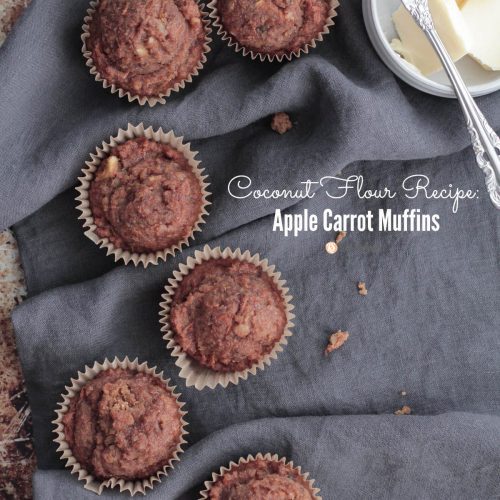
Apple Carrot Coconut Flour Muffins
Ingredients
- 4 eggs room temperature
- 1/2 cup honey
- 4 TB butter melted
- 1 tsp pure vanilla extract
- 3/4 cup Bob's Red Mill Coconut Flour
- 1 1/2 tsp ground cinnamon
- 1 tsp baking soda
- 1/2 tsp ground ginger
- 1/4 tsp salt
- 1 cup carrots finely shredded
- 1/2 cup apples finely chopped, I used Gala
- 1/3 cup walnuts finely chopped
Instructions
- Preheat the oven to 350F.
- Line a muffin pan with muffin liners or grease.
- In the bowl of a stand-mixer (find all my favorite baking tools here) beat the eggs, honey, and vanilla extract for 30 seconds. A hand-mixer can also be used.
- Add the coconut flour, baking soda, cinnamon, ginger, and salt to the egg mixture. Beat the mixture on medium speed until fluffy (approximately 1 minute).
- Fold the carrots, apples, and walnuts into the batter. Let the muffin batter rest for 3 minutes before scooping into the muffin pan.
- Bake for 20 minutes, until a toothpick inserted in the center of the muffins comes out clean. Allow the muffins to cool before serving.
Nutrition
More Ultimate Fall Baking:
Converting Recipes for Gluten-Free Baking + Gingersnaps

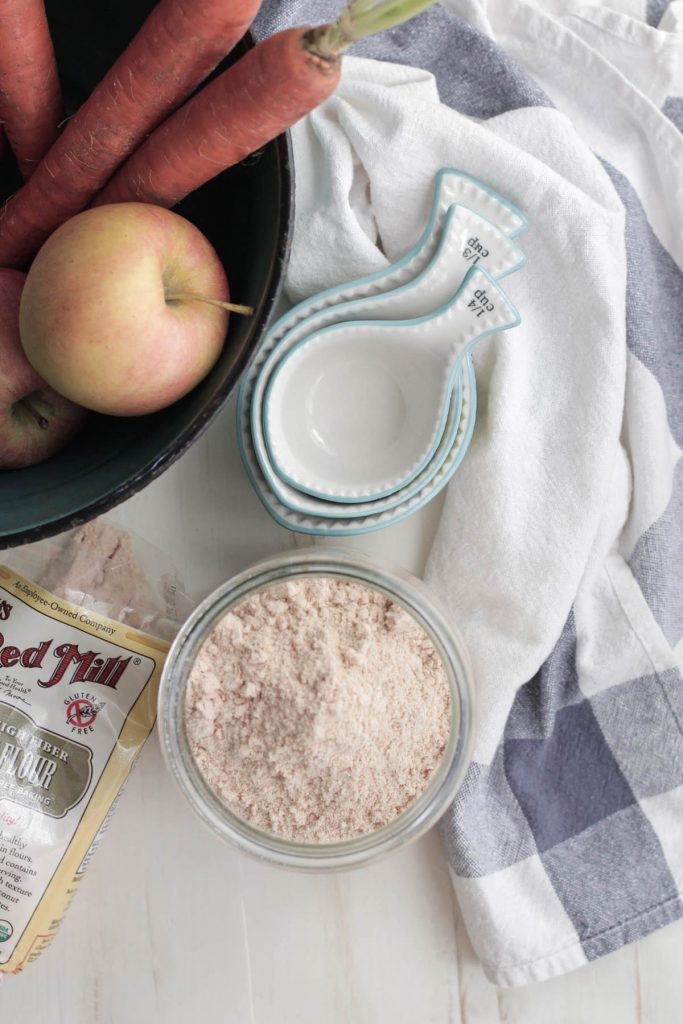
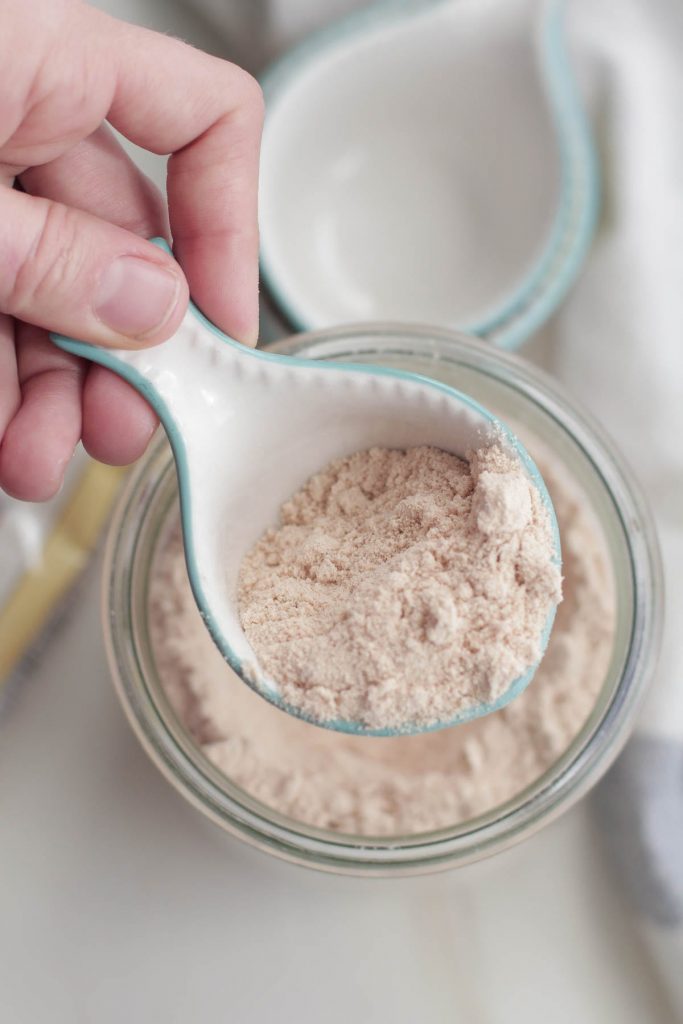
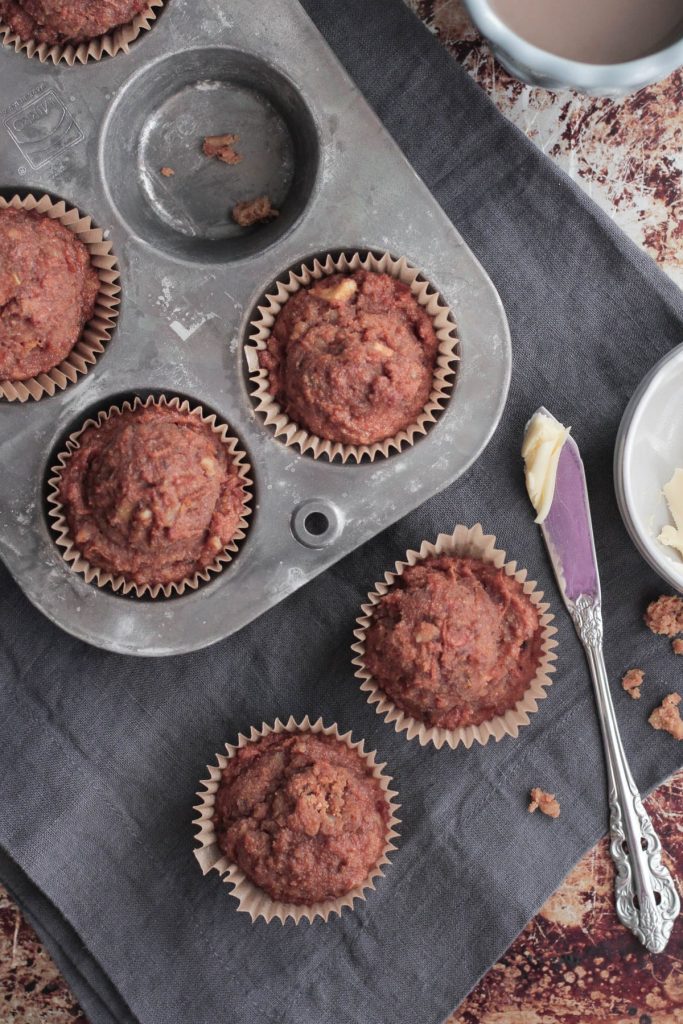
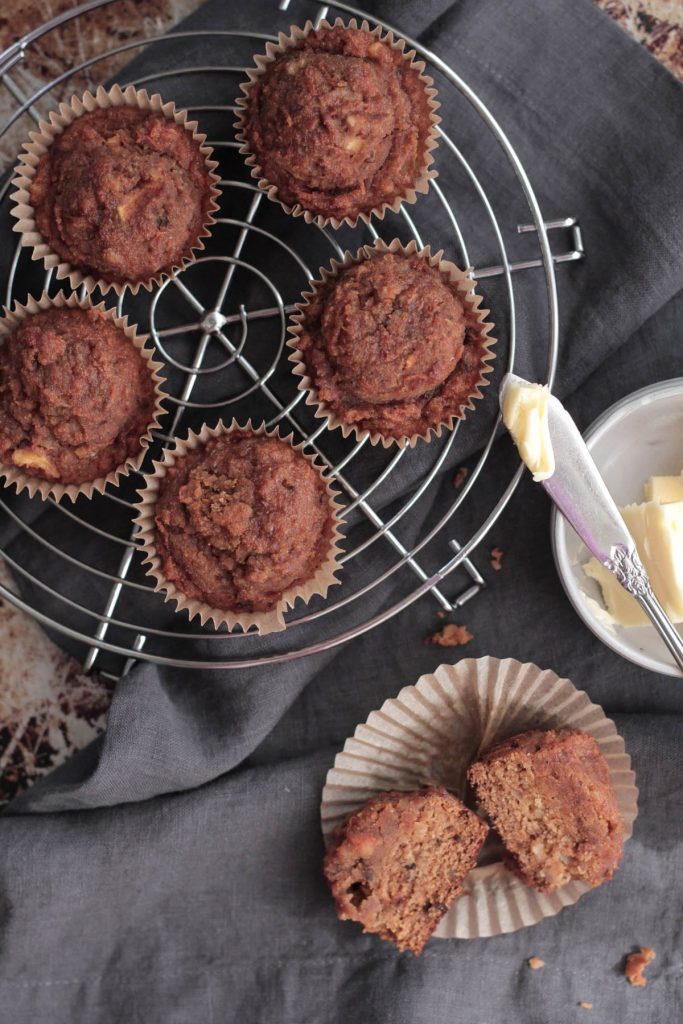
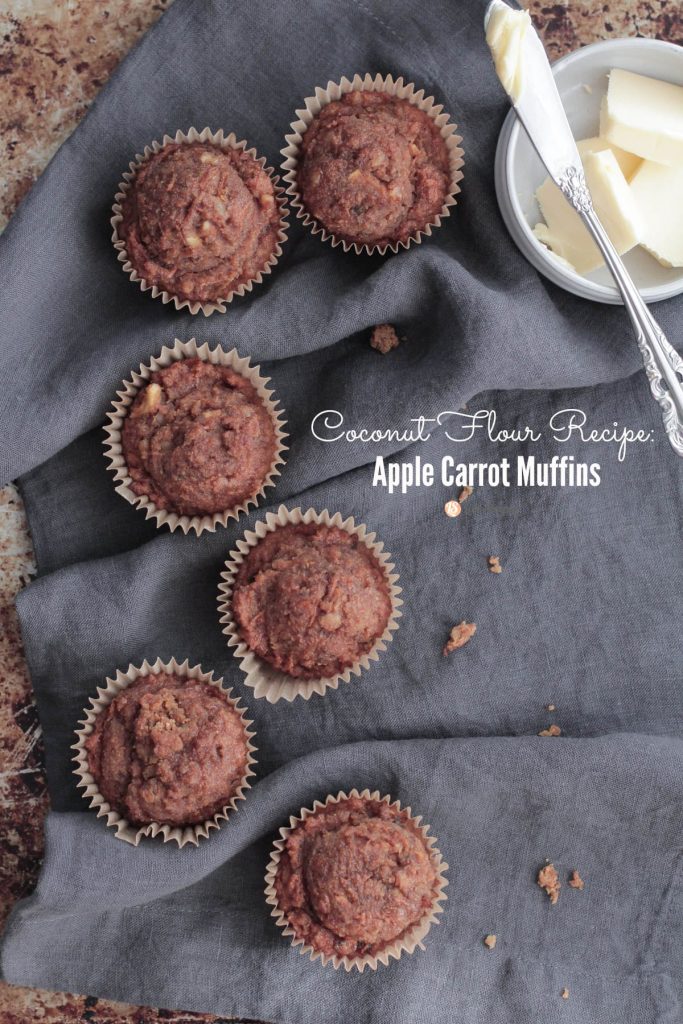
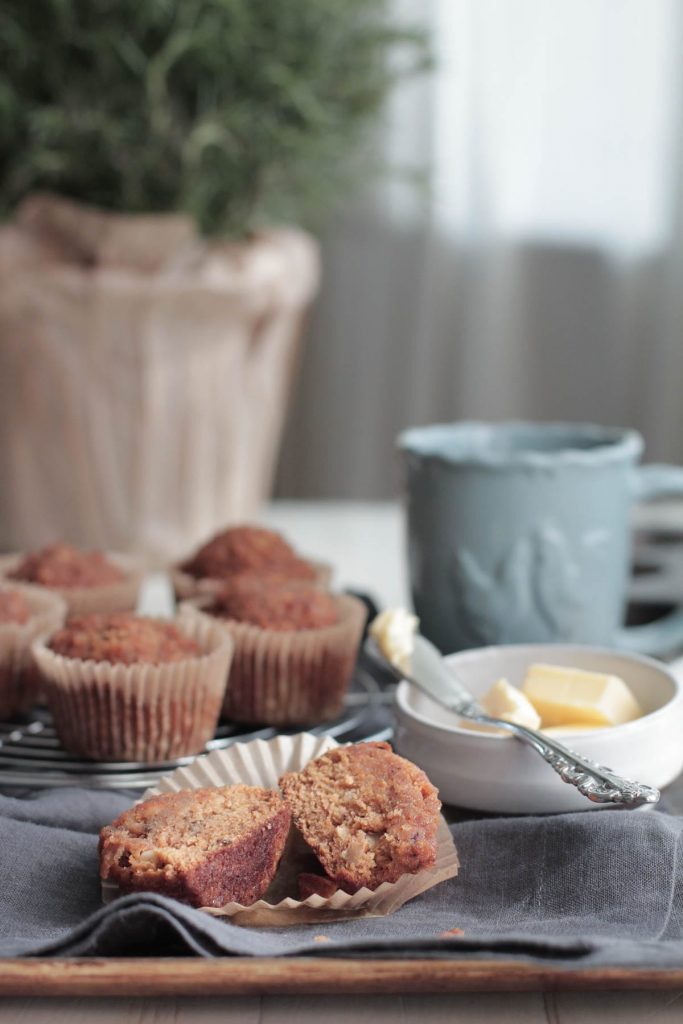
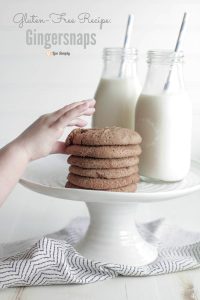
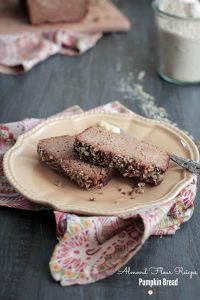
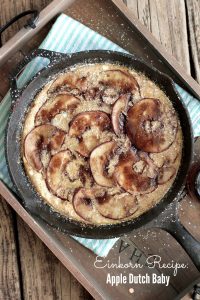
I just made these muffins – love them! I didn’t have a full 1/2 cup of honey so I added a real maple syrup to make it a full 1/2 cup. Next time I make I will cut up the apple even smaller. (I got 11 muffins)
This is my first time using coconut flower – purchased in error. What a delicious mistake! Thank you!
So happy you loved it, Patty.
Thank you for commenting and rating.
LS Team
Hi there
Thanks for sharing the recipe. I followed it step by step but for some reason my batter was very dry and not liquid-y at all. It didn’t rise at all and my muffins tasted like sand for some reason – not sure where I went wrong but not sure I will be using coconut flour again soon..
Hey Eva, I’m sorry to hear that. What brand coconut flour did you use? Coconut flour definitely has a grittier texture than a gluten-based flour. The same goes for almond flour.
Tried this out for the first time this afternoon – I haven’t worked with coconut flour on its own before. I had to sub 1/2c of apple sauce for honey because I can’t eat honey/sugar/maple syrup/etc. The muffins taste fantastic. But I had a ton of batter – I stuck to the six muffin tin, but they were huge, so I had to double the bake time, and they still came out a little wet in places. Has anyone else found this? The muffins in the images look on the smaller side, typical of non-wheat muffins which I find don’t rise much if at all. Next time (assuming I didn’t just mis-measure something this time) I think I’ll go for 12 small muffins. But I’m thrilled to have a nut free recipe – thank you.
PS – I still don’t see the addition of the butter to the wet ingredients in the instructions, I notice you already replied to a note about this saying you’d update it – something funny going on there!
These freeze Ok?
They do!
I was wondering what to do with butter too, good thing I read the comments! Fun baking for a gloomy June day…thank you for the recipe.
Awesome, Pearl!
Can I leave out the honey? Or will they not turn out right. Thanks!
Hey Meaghan, I don’t believe so.
Clarification on the butter, please: it is just for greasing the pan? Thanks!
Hey Laura, It should be added with the honey, vanilla, and eggs. I’m adding the butter to the directions. Thank you for asking!
Thank you! Making these for Easter dinner tomorrow 🙂
You’re welcome, Laura! Enjoy!! And Happy Easter :).
Love the idea of using coconut flour. I even played around with using it in cooking such as coating fish with no real success. I am ready to take on a baking project with coconut flour now that I have so many recipes to try and an understanding that coconut flour needs equal parts of liquid.
I’m so glad, Dawn. It’s the trickiest flour in my opinion to figure out, because of the amount of eggs and moisture needed, but once you get used to it, coconut flour can produce really delicious baked goods! I can’t wait to hear what you make.
What a great series!
Thanks for getting together such great information for us. These all look great, too!
I’m with you, and am not a huge fan of using coconut flour by itself, but I also love to use it with almond flour for grain free baking. I like tapioca flour too, and the texture it gives in some recipes, but it sometimes gives off a strange flavor too, so I prefer using coconut flour when I can.
Mmm, those carrot cake muffins look fabulous! I can’t wait to try them. Thanks so much for the shout-out on my coconut flour treats too! You are a blessing, sweet friend! 🙂 I’ll definitely be sharing this post.
Thank you so much, Kelly! Your grain-free recipes are so delicious. You’ve really helped to open my eyes (and tastebuds) to the amazing world of grain-free baking. I can’t wait for your cookbook!!!